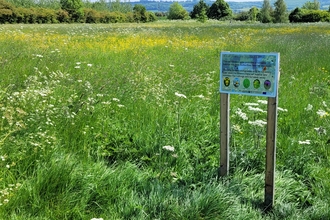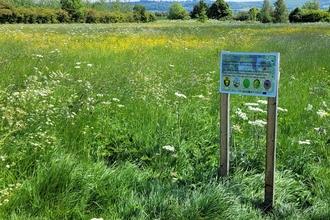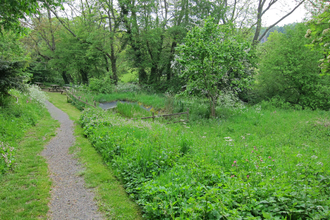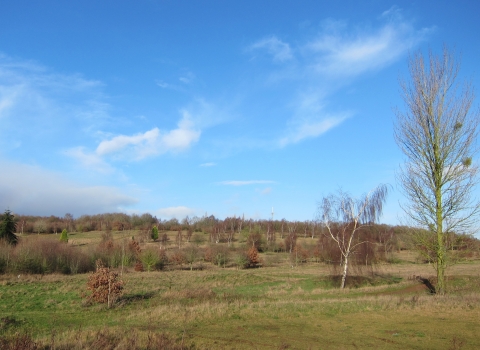One of the largest Natural Networks projects so far, this exciting venture led by Wyre Forest District Council is delivering more than 17 hectares of acid heathland and grassland habitat restoration and creation on an abandoned golf course at the edge of Stourport-on-Severn.
The site fits particularly well with Natural Networks because it forms part of one of the most important acid heathland complexes in Worcestershire. It is adjacent to the Council's Burlish Top Nature Reserve and adds to a group of existing sites that includes our nature reserves at Dropping Well Farm and The Devil's Spittleful and the council's heathland at the Rifle Range. It really is part of a 'natural network' and will be a fantastic addition to the special habitats already in the area.
Natural Networks provided funding and advice to help deliver:
- The restoration and creation of acid grassland and heathland mosaic. This sort of habitat includes well-known plants like heather and harebells but is very rare in Worcestershire. It's only found on the sandy soils in the north of the county and so this is the only area in which restoration projects like this one can be achieved.
- Creation of bunds and bare ground. Providing mounds of bare sandy soil amongst the restored grassland is incredibly important for the many species of insect that specialise in this sort of habitat. A range of bees and other pollinators are found only on the sandy soils in this part of the county and so including 'bee cliffs' designed to encourage them is a big part of the project.
- Scrub and hedgerow restoration. These habitats provide vital pollen and nectar for insects as well as offering a range of micro-climates across the otherwise very open site. Careful restoration and management will maximise their value for wildlife and contribute to the enhancement of the site not only for insects but also for birds and small mammals.
- Installation of bird and bat boxes. Because many of the trees on site are quite young there are few natural nest holes or roosting sites. Natural Networks is funding the addition of boxes to replace these more natural holes so that more birds and bats can take advantage of the improved habitats more quickly.
- Pond creation and restoration. Wetlands are an important but often overlooked component of acid habitat mosiacs and the site's wildlife will benefit from the addition of new ponds and their associated plants and animals.
- Reinstating the public footpaths and opening up access to allow the public to enjoy the restored and rejuvenated site for the future.
In the video below Paul Allen from Wyre Forest District Council talks us through the project.
Video by James McDonald, Clear Picture Productions Ltd
In this second film our Natural Networks Officer Jasmine checks up on progress at Burlish a year after the first work was completed.
Video by James McDonald, Clear Picture Productions Ltd
In the final film in the series Adam Hamilton from Wyre Forest District Council tells us more about the extension at Burlish Meadows, taking in restoration of the old tip next to the golf course.
Work in this part of the site included removing fly-tipped and potentially harmful materials, planting trees along the boundaries and pond restoration – reprofiling the steep sides into shallow slopes to allow natural colonisation of marginal plants and allow safe entry / exit for wildlife, removing goldfish and clearing any dumped debris.
Video by James McDonald, Clear Picture Productions Ltd

Natural Networks funding increased to encourage more wildlife-rich habitats
Natural Networks grants, available for projects which aim to create or restore wildlife-rich habitats, have been increased to cover 70%…

Natural Networks success
A project to connect habitats and increase the abundance of wildlife in Worcestershire is celebrating the securing of funding to extend…

Wildlife and access improvements at The Knapp and Papermill
Work to make improvements for wildlife and people at a popular nature reserve will result in temporary path diversions and a one day…

